





Shrubs combine the year-round presence of trees with the seasonal color appeal of many herbaceous plants, and they do it at eye level, where their efforts to please can be appreciated. They give us the background, foreground, and framework for an ornamental landscape, and the best ones do so gracefully. When you plan your next landscape renovation, or the new landscape for your just-completed dream home, take a closer look at this list of great shrubs. Many of them are North American natives and are widely adaptable throughout the country for year-round appeal. One or more will surely fit into your soil conditions, climate, and garden design. One just might become the focal point of your yard.
continue reading below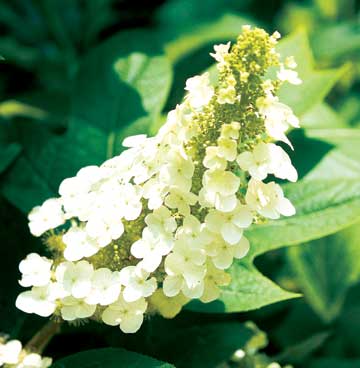 Oakleaf Hydrangea
Oakleaf Hydrangea
(Hydrangea quercifolia) Most hydrangeas are grown for their summer blooms, but oakleaf hydrangea has the additional attributes of rich crimson fall color, attractive fruit sprays, and peeling bark on old stems. Unlike other common hydrangeas, this species has large leaves that are lobed like oak leaves. It is also more drought-tolerant than some of its cousins, but it still rewards its owner with superior performance in rich, moist soil in a shady location. It never looks like a tree, but it can reach 10 feet tall on favorable sites, although 6 feet is average. Flowers develop gradually into colorful seed clusters, prolonging their appeal. Oakleaf hydrangea is native to the southeastern United States but is broadly adaptable. Zones 5 to 9.
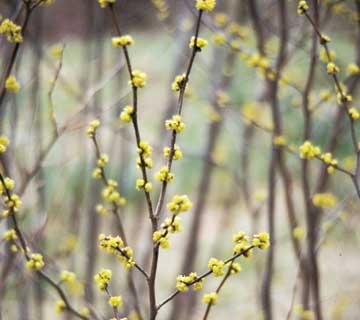 Spice Bush
Spice Bush
(Lindera benzoin) A plant with many positive attributes, spice bush breaks out in yellow during fall, produces a haze of tiny greenish-yellow flowers in early spring, and generates scarlet berries on female plants in late summer. It serves as a host plant to several species of butterflies, and its aromatic twigs are often used to stir herbal teas. Plant it along a sidewalk or beside a patio to take advantage of its pleasant fragrance. It loves deep shade -- where it can reach a height of 12 to 15 feet -- but maintains a more compact form than many other shade-loving plants. Spice bush isn't picky about soil quality as long as it has adequate moisture. Zones 5 to 9.
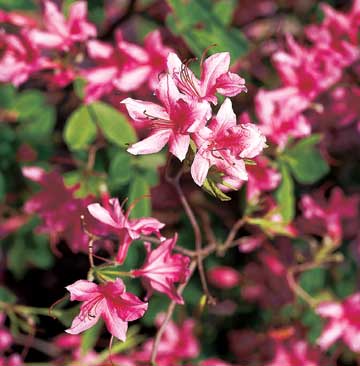 Northern Lights Azaleas
Northern Lights Azaleas
(Rhododendron Northern Lights Group) This group of superhardy deciduous azaleas was developed in Minnesota as a complex series of hybrids involving the hardiest North American and Asian Rhododendron species. Unlike most other rhododendrons -- many of which are equally spectacular in mild climates -- the Northern Lights Group will survive temperatures as low as -40 F. Popular selections, named for their flower colors, include "White Lights," "Rosy Lights," and "Golden Lights." They all mature at about 5 to 6 feet, placing their spectacular spring flower displays at viewing level. They like partial shade and thrive in the same well-drained, organic, and acidic soils that are preferred by all rhododendrons. Zones 4 to 7.
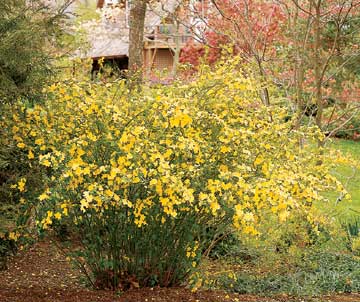 Japanese Rose
Japanese Rose
(Kerria japonica) A low, arching shrub that functions equally well as a tall groundcover, Japanese rose provides multiseason interest in a shrub border. Seldom exceeding 5 feet in height, it spreads slowly into a dense clump. Its flowers are yellow and showy in spring, but the bright twig coloration that lasts all winter is a better reason to grow this plant. Cut the plant to the ground occasionally in early spring to remove any winter damage, and you'll be rewarded with vigorous and colorful regrowth. Double-flowering and variegated forms are available. It tolerates sun or shade, and grows well in most soils. Zones 5 to 9.
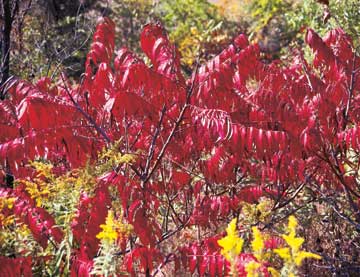 Smooth Sumac
Smooth Sumac
(Rhus glabra) A favorite for dry, sunny areas, this sumac also does well in light shade. It can grow to about 12 feet in height but is often shorter, and it spreads readily into a dense grouping of stems. Large clusters of tiny, pale yellow flowers are followed by scarlet fruit, which persists all winter. The sumac's signature red fall color arrives in early autumn and is the highlight of the landscape. A rare cutleaf cultivar, "Laciniata," has extremely attractive red leaf stalks that become stunning in fall when the leaves turn, giving the bush a two-tone effect. Smooth sumac grows in almost any soil. Zones 3 to 9.
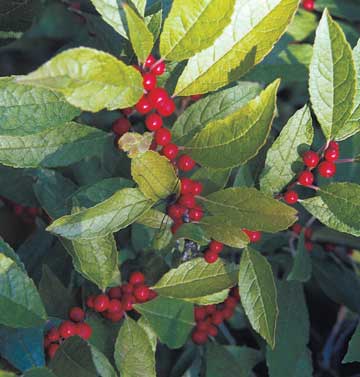 Winterberry
Winterberry
(Ilex verticillata) Typically, hollies are thought of as Southern evergreen trees or shrubs. Winterberry is very different -- it's fully deciduous from Zone 9 north into Zone 4. Winterberry seldom exceeds 10 feet in height. It tolerates wet soil in sun or shade, but grows equally well in fairly dry sites where soil pH is below 6.5 (acidic). This plant, with its small, drab leaves, is not spectacular in spring or summer, but it dominates the landscape in winter with its brilliant red fruit. The fruit is produced only on female plants and is most abundant when a male plant is nearby to contribute pollen. Zones 4 to 9.
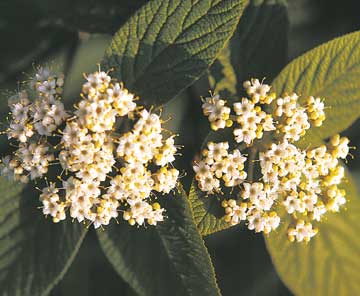 Leatherleaf Viburnum
Leatherleaf Viburnum
(Viburnum rhytidophylloides) It is difficult to single out one viburnum species because so many are outstanding ornamental plants. This hybrid combines white spring flower clusters and long-lasting pink and/or red fruit that ripens to black in late summer through fall with heavy, rugose, semievergreen foliage. It is a medium to large shrub, reaching about 8 feet tall and broad, and it grows in full sun or partial shade in neutral or acidic soil that is moist or dry. This viburnum and some of its close relatives are wonderful all-season plants for your landscape. Zones 5 to 8.
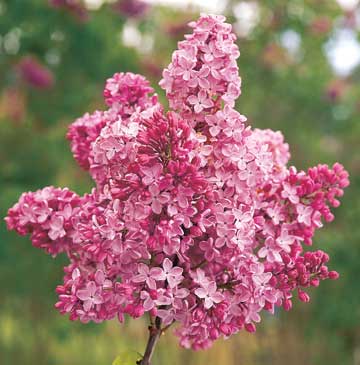 Common Lilac
Common Lilac
(Syringa vulgaris) An old favorite, lilac needs no introduction to most North American gardeners. Many new cultivars and hybrids are available, as well as additional species. Some of the more recent introductions broaden the color selection, extend the blooming season, and provide increased resistance to leaf mildew. Flower colors range from white to pink to lavender to purple. Common lilacs prefer an alkaline or neutral, well-drained soil. They do best in regions that have hard freezes and thaws because chilling temperatures produce radiant blooms later. Zones 3 to 7.
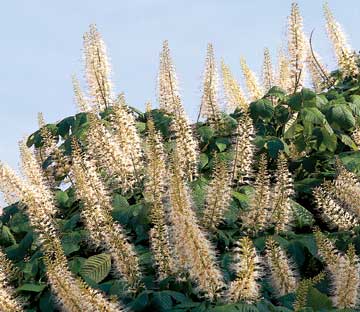 Bottlebrush Buckeye
Bottlebrush Buckeye
(Aesculus parviflora) Many buckeye species, both trees and shrubs, have great horticultural merit. The combination of bottlebrush's tall white flowers in late spring (much later than most other buckeyes), its mounded growth habit, and its lush foliage throughout summer make it special. In fall, the foliage often turns a pleasant clear yellow that brightens the shady areas where it prefers to grow. However, like many plants, it becomes denser and flowers more profusely in brighter locations. Bottlebrush reaches a height of 10 feet and, if given room to sprawl, slowly spreads to fill a planting area or cover part of a wooded slope. It is not very fussy about soil and will grow well in many different habitats. Zones 5 to 9.
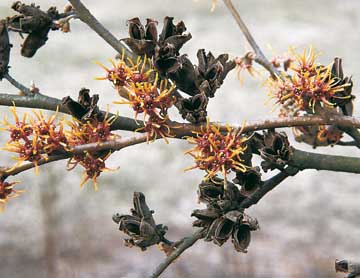 Vernal Witch Hazel
Vernal Witch Hazel
(Hamamelis vernalis) As the snow begins to melt -- often even before -- vernal witch hazel is one of the first woody plants to awaken. Clinging to upright limbs, its yellow or reddish spidery flowers are a sure sign that winter is winding down. This species is more compact and denser than its large, fall-blooming cousin, common witch hazel (Hamamelis virginiana), usually staying less than 12 feet tall. It has thick leaves that remain attractive all summer and in fall turn a nice yellow that repeats the flower color. Flowers vary in size and color, so choose your plant at the nursery when it is in bloom. Vernal witch hazel grows in a broad range of soil conditions in either sun or shade. Zones 4 to 8.
Copyright © www.100flowers.win Botanic Garden All Rights Reserved